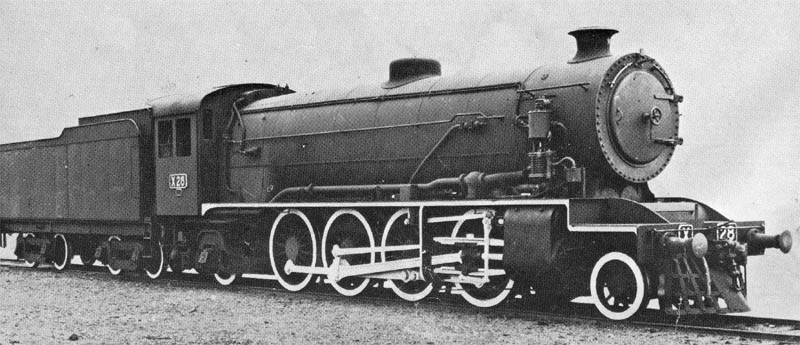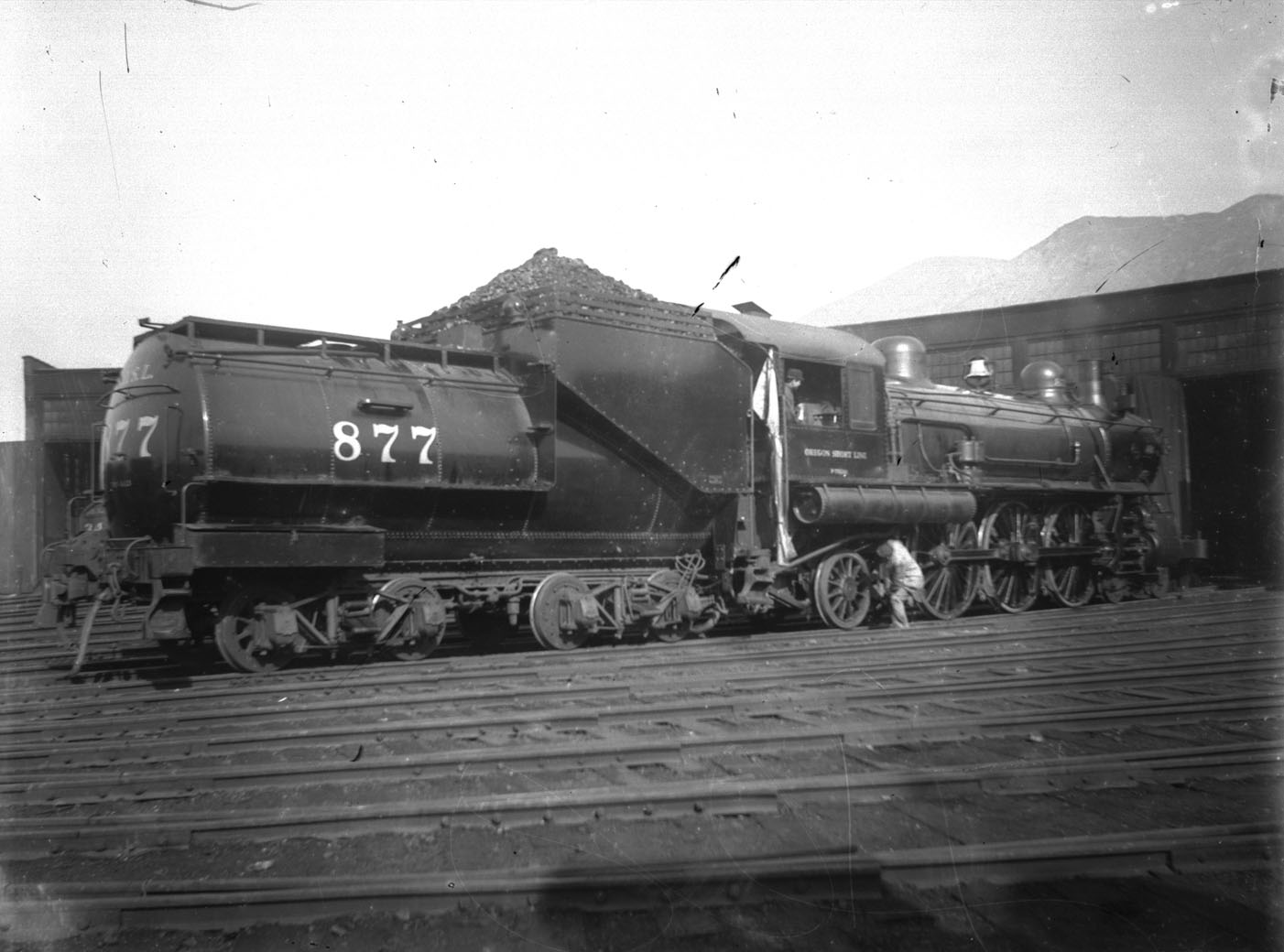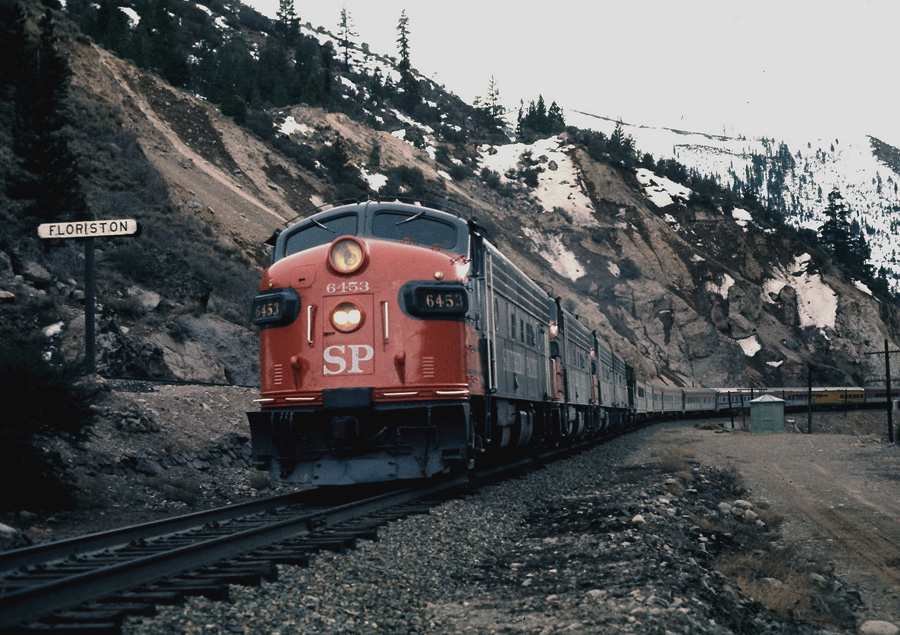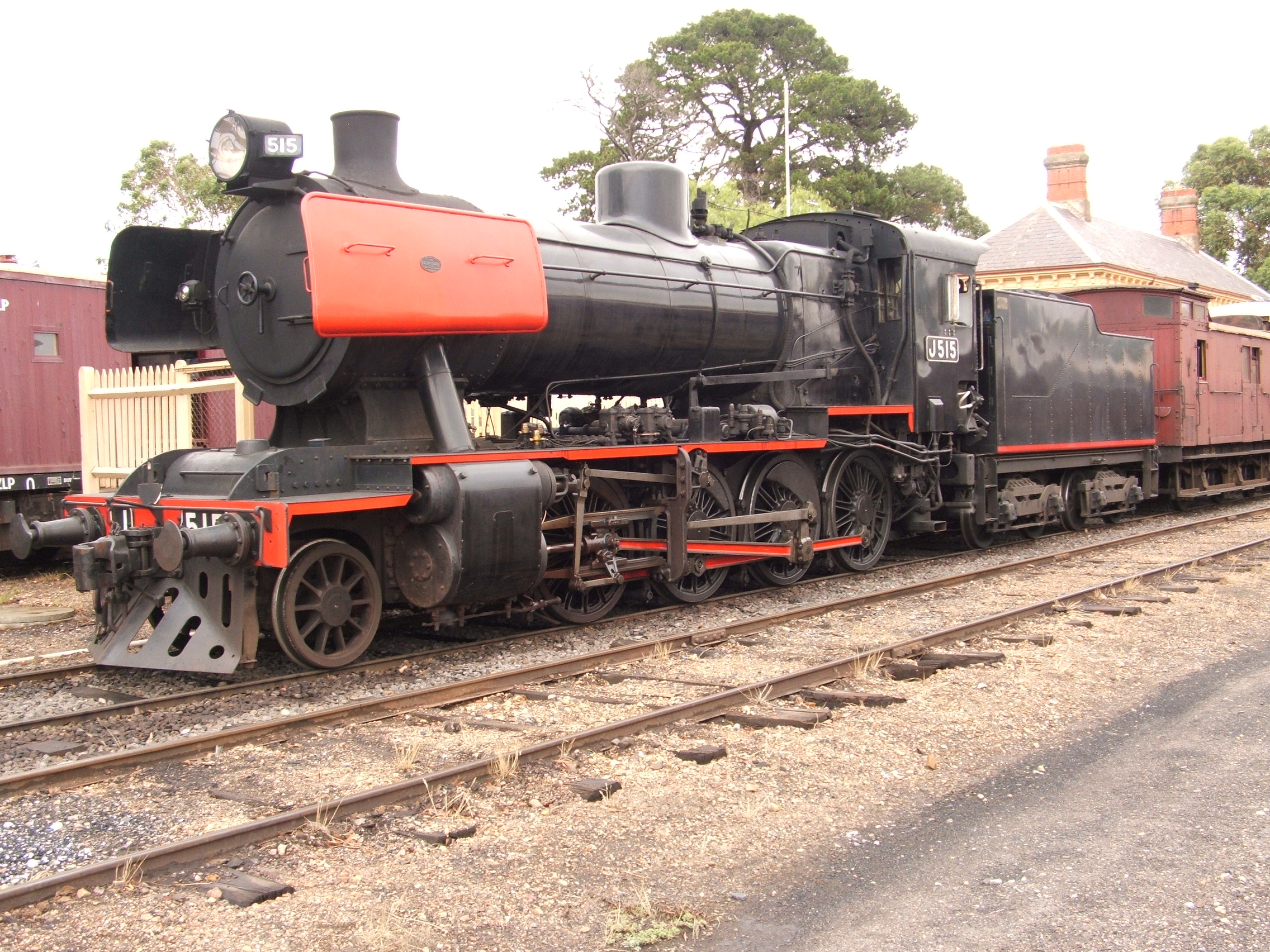|
Nevada State Railroad Museum Boulder City
The Nevada State Railroad Museum Boulder City is a railroad museum in Boulder City, Nevada which is an agency of the Nevada Department of Tourism and Cultural Affairs. The railway is located on the tracks that were installed to support construction activities at the Hoover Dam. The state obtained the tracks and right of way from the Union Pacific Railroad in 1985. Heritage railroad The museum operates a heritage railroad which offers passenger excursion trains using historic railroad equipment on a 7-mile, 45 minute round trip. Operations began in 2002, and the museum also offers the opportunity for passengers to ride in the locomotive cab, the caboose and to operate trains (subject to reservations and availability). This ride features a preserved former Union Pacific EMD GP30, No 844: Mount Hood 90, which became famous for necessitating the renumbering of steam locomotive 844 to 8444 from 1962 to 1989: Mount Hood Railroad 90! . It weighs approximately 125 tons and has a turboc ... [...More Info...] [...Related Items...] OR: [Wikipedia] [Google] [Baidu] |
Nevada Southern Railroad Museum, Boulder City NV
Nevada ( ; ) is a state in the Western region of the United States. It is bordered by Oregon to the northwest, Idaho to the northeast, California to the west, Arizona to the southeast, and Utah to the east. Nevada is the 7th-most extensive, the 32nd-most populous, and the 9th-least densely populated of the U.S. states. Nearly three-quarters of Nevada's people live in Clark County, which contains the Las Vegas–Paradise metropolitan area, including three of the state's four largest incorporated cities. Nevada's capital is Carson City. Las Vegas is the largest city in the state. Nevada is officially known as the "Silver State" because of the importance of silver to its history and economy. It is also known as the "Battle Born State" because it achieved statehood during the Civil War (the words "Battle Born" also appear on its state flag); as the "Sagebrush State", for the native plant of the same name; and as the " Sage-hen State". The name means "snowy" in Spanish, refe ... [...More Info...] [...Related Items...] OR: [Wikipedia] [Google] [Baidu] |
Baldwin Locomotive Works
The Baldwin Locomotive Works (BLW) was an American manufacturer of railroad locomotives from 1825 to 1951. Originally located in Philadelphia, it moved to nearby Eddystone, Pennsylvania, in the early 20th century. The company was for decades the world's largest producer of steam locomotives, but struggled to compete as demand switched to diesel locomotives. Baldwin produced the last of its 70,000-plus locomotives in 1951, before merging with the Lima-Hamilton Corporation on September 11, 1951, to form the Baldwin-Lima-Hamilton Corporation. The company has no relation to the E.M. Baldwin and Sons of New South Wales, Australia, a builder of small diesel locomotives for sugar cane railroads. History: 19th century Beginning The Baldwin Locomotive Works had a humble beginning. Matthias W. Baldwin, the founder, was a jeweler and whitesmith, who, in 1825, formed a partnership with machinist David H. Mason, and engaged in the manufacture of bookbinders' tools and cylinders for cal ... [...More Info...] [...Related Items...] OR: [Wikipedia] [Google] [Baidu] |
Mikado (locomotive)
Under the Whyte notation for the classification of steam locomotives, represents the wheel arrangement of two leading wheels on one axle, usually in a leading truck, eight powered and coupled driving wheels on four axles and two trailing wheels on one axle, usually in a trailing truck. This configuration of steam locomotive is most often referred to as a Mikado, frequently shortened to Mike. At times it was also referred to on some railroads in the United States of America as the McAdoo Mikado and, during World War II, the MacArthur. The notation 2-8-2T indicates a tank locomotive of this wheel arrangement, the "T" suffix indicating a locomotive on which the water is carried in tanks mounted on the engine rather than in an attached tender (rail), tender. Overview The 2-8-2 wheel arrangement allowed the locomotive's Firebox (steam engine), firebox to be placed behind instead of above the driving wheels, thereby allowing a larger firebox that could be both wide and deep. This s ... [...More Info...] [...Related Items...] OR: [Wikipedia] [Google] [Baidu] |
Oregon Railroad And Navigation Company
The Oregon Railroad and Navigation Company (OR&N) was a railroad that operated a rail network of running east from Portland, Oregon, United States, to northeastern Oregon, northeastern Washington, and northern Idaho. It operated from 1896 as a consolidation of several smaller railroads. OR&N was initially operated as an independent carrier, but Union Pacific (UP) purchased a majority stake in the line in 1898. It became a subsidiary of UP titled the Oregon–Washington Railroad and Navigation Company in 1910. In 1936, Union Pacific formally absorbed the system, which became UP's gateway to the Pacific Northwest. Predecessors The OR&N was made up of several railroads: *Columbia Southern Railway from Biggs to Shaniko, Oregon. *Oregon ''Railway'' and Navigation Company traces its roots back as far as 1860. It was incorporated in 1879 in Portland, Oregon and operated between Portland and eastern Washington and Oregon until 1896, when it was reorganized into the Oregon ''Railroad'' ... [...More Info...] [...Related Items...] OR: [Wikipedia] [Google] [Baidu] |
Oregon Short Line
The Oregon Short Line Railroad was a railroad in Wyoming, Idaho, Utah, Montana and Oregon in the United States. The line was organized as the Oregon Short Line Railway in 1881 as a subsidiary of the Union Pacific Railway. The Union Pacific intended the line to be the shortest route ("the short line") from Wyoming to Oregon and the Pacific Northwest. Construction was begun in 1881 at Granger, Wyoming, and completed in 1884 at Huntington, Oregon. In 1889 the line merged with the Utah & Northern Railway and a handful of smaller railroads to become the Oregon Short Line and Utah Northern Railway. Following the bankruptcy of Union Pacific in 1897, the line was taken into receivership and reorganized as the Oregon Short Line Railroad (“OSL”). The OSL became a part of the Union Pacific System in the Harriman reorganization of 1898. Oregon Short Line Railway The Oregon Short Line Railway was organized on April 14, 1881. The line started from the Union Pacific main line in Grang ... [...More Info...] [...Related Items...] OR: [Wikipedia] [Google] [Baidu] |
Chicago And Alton
The Alton Railroad was the final name of a railroad linking Chicago to Alton, Illinois; St. Louis, Missouri; and Kansas City, Missouri. Its predecessor, the Chicago and Alton Railroad , was purchased by the Baltimore and Ohio Railroad in 1931 and was controlled until 1942 when the Alton was released to the courts. On May 31, 1947, the Alton Railroad was merged into the Gulf, Mobile and Ohio Railroad. Jacob Bunn had been one of the founding reorganizers of the Chicago & Alton Railroad Company during the 1860s. Main lines included Chicago to St. Louis and a branch to Kansas City. The former is now part of Union Pacific, with Metra Heritage Corridor commuter rail service north of Joliet (owned by the Canadian National Railway but used by UP). Today, the Kansas City line is part of the Kansas City Southern Railway system. History The earliest ancestor to the Alton Railroad was the Alton and Sangamon Railroad, chartered February 27, 1847, in Illinois to connect the Mississippi Riv ... [...More Info...] [...Related Items...] OR: [Wikipedia] [Google] [Baidu] |
Southern Pacific Transportation Company
The Southern Pacific (or Espee from the railroad initials- SP) was an American Class I railroad network that existed from 1865 to 1996 and operated largely in the Western United States. The system was operated by various companies under the names Southern Pacific Railroad, Southern Pacific Company and Southern Pacific Transportation Company. The original Southern Pacific began in 1865 as a land holding company. The last incarnation of the Southern Pacific, the Southern Pacific Transportation Company, was founded in 1969 and assumed control of the Southern Pacific system. The Southern Pacific Transportation Company was acquired in 1996 by the Union Pacific Corporation and merged with their Union Pacific Railroad. The Southern Pacific legacy founded hospitals in San Francisco, Tucson, and Houston. In the 1970s, it also founded a telecommunications network with a state-of-the-art microwave and fiber optic backbone. This telecommunications network became part of Sprint, a compa ... [...More Info...] [...Related Items...] OR: [Wikipedia] [Google] [Baidu] |
Associated Railroads
*
{{dab ...
Associated may refer to: *Associated, former name of Avon, Contra Costa County, California * Associated Hebrew Schools of Toronto, a school in Canada *Associated Newspapers, former name of DMG Media, a British publishing company See also *Association (other) *Associate (other) Associate may refer to: Academics * Associate degree, a two-year educational degree in the United States, and some areas of Canada * Associate professor, an academic rank at a college or university * Technical associate or Senmonshi, a Japan ... [...More Info...] [...Related Items...] OR: [Wikipedia] [Google] [Baidu] |
Heber City, Utah
Heber City is a city and county seat of Wasatch County, Utah, Wasatch County, Utah, United States. The population was 11,362 at the time of the 2010 census. It is located 43 miles southeast of Salt Lake City. History Heber City was first settled in 1859 by Robert Broadhead, James Davis, and James Gurr. John W. Witt built the first house in the area. The area was under the direction of Bishop Silas Smith, who was in Provo. In 1860 Joseph S. Murdock became the bishop over the Latter-day Saints in Heber City and vicinity. On May 5, 1899, the Wasatch Wave published this on the 40-year anniversary of Heber, "Forty years ago this week [April 30, 1859], this valley was first settled by a company of enterprising citizens from Provo. This company consisted of John Crook, James Carlile, Jessie Bond, Henry Chatwin, Charles N. Carroll, Thomas Rasband, John Jordan, John Carlile, Wm Giles and Mr. Carpenter, the last five named persons having since died. Forty years ago today, John Crook a ... [...More Info...] [...Related Items...] OR: [Wikipedia] [Google] [Baidu] |
La Salle, Colorado
The Town of LaSalle (incorporated in 1910 as the ) is a Statutory Town in Weld County, Colorado, United States. The town population was 1,955 at the 2010 United States Census. A post office called La Salle has been in operation since 1886. The community was named by railroad officials after LaSalle Street in Chicago. Geography LaSalle is located at (40.350681, -104.702914). According to the United States Census Bureau, the town has a total area of , all of it land. Demographics As of the census of 2000, there were 1,849 people, 651 households, and 486 families residing in the town. The population density was . There were 669 housing units at an average density of . The racial makeup of the town was 78.85% White, 0.38% African American, 0.76% Native American, 0.16% Asian, 0.22% Pacific Islander, 16.12% from other races, and 3.52% from two or more races. Hispanic or Latino of any race were 31.64% of the population. There were 651 households, out of which 39.2% had childre ... [...More Info...] [...Related Items...] OR: [Wikipedia] [Google] [Baidu] |
2-8-0
Under the Whyte notation for the classification of steam locomotives, represents the wheel arrangement of two leading wheels on one axle, usually in a leading truck, eight powered and coupled driving wheels on four axles, and no trailing wheels. In the United States and elsewhere, this wheel arrangement is commonly known as a Consolidation, after the Lehigh and Mahanoy Railroad’s ''Consolidation'', the name of the first 2-8-0.White, John H. Jr. (1968). ''A history of the American locomotive; its development: 1830-1880''. New York: Dover Publications, p. 65. The notation 2-8-0T indicates a tank locomotive of this wheel arrangement, the "T" suffix indicating a locomotive on which the water is carried in side-tanks mounted on the engine rather than in an attached tender. The Consolidation represented a notable advance in locomotive power. After 1875, it became "the most popular type of freight locomotive in the United States and was built in greater quantities than any other si ... [...More Info...] [...Related Items...] OR: [Wikipedia] [Google] [Baidu] |

.png)





